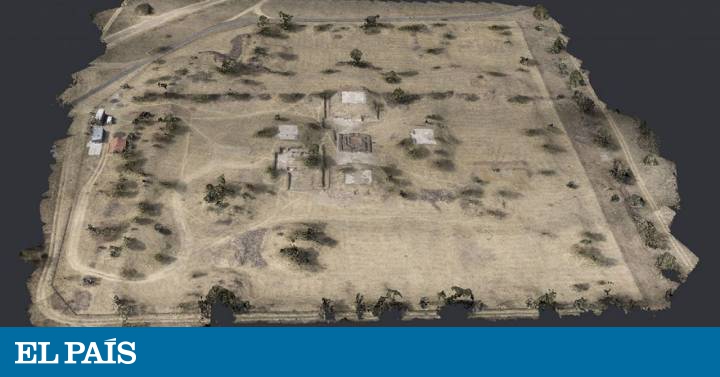For decades, archeologist Linda Manzanilla has been chasing Teotihuacan's decline, the moment of the end of the City of the Gods, the great fire that, as I had long thought, had determined its decline. It has been approaching little by little, as one who carves obsidian the secrets of the past, until the results of the investigation in the palace of Xalla, a huge complex not far from the Pyramid of the Sun, came to his hands. Teotihuacan fell largely by fire, he has no doubt. Carbon 14 and archeomagnetism tests date the great fire around the year 575. "The buildings of the Causeway of the Dead, the spaces of the elite - like Xalla - were set on fire," explains the researcher.
This week, Manzanilla, 69, has finally presented the results of the excavations in the old palace, accompanied by all the specialists who have worked on the site these years: experts in pigments, radiocarbon, electromagnetism, crystals of mica, in musical instruments for over a thousand years ... It is a complex of 55,000 square meters, a fortress that, according to the archaeologist, could be the center of power of two of the four predominant groups in Teotihuacan.
Unlike the Mayan state cities or the modern Tenochtitlan, in Teotihuacan there was not a single ruler. The lack of "propaganda", as Manzanilla says, of a Pakal or a Moctezuma in the City of the Gods, makes him think that it was a government in council, an assembly. Teotihuacan was divided into four districts and within those four districts there were 22 neighborhoods. It was a multiethnic city, born by the whim of the activity of the volcanoes - especially the Popocatepetl - at the beginning of the first century, a city of neighborhoods, of multifamily complexes. A city of artisans. It was the activity of neighborhoods and districts, artisanal and funeral practices that shaped the governing council. And also, somehow, the ones that killed him.
On the first day of conferences, on Monday, Manzanilla explained that there came a time when middle-class nobles in the neighborhoods became powerful and the elites wanted to control their power. "But the nobles had already become too rich," says the researcher, "they were like businessmen. They organized caravans, they had allies in their [commercial] corridors, they were no longer going to like to be tried to control. Let's also consider the drought ", Add. "Imagine that the main god was that of rain. And we have traces of drought at that time, a drought that affects a city of 120,000 people. And since Xalla is in the quadrant [district] of the rain god, it is obvious that this part of the city is one of the most destroyed: lack of food, attempt to control the neighborhoods and revolt against the group of the storm god. "
On the octopus head
In a booklet he published a couple of years ago, Manzanilla summarizes decades of research in Teotihuacan. It was a "rather weak state", writes Manzanilla, "which could be equated with an octopus, with the great capital as head (...) and then the 'tentacles', corridors of sites allied with the Teotihuacans, towards the places and regions producing luxury goods. "
Chamomile began investigating Teotihuacan for the tentacles. Or by the channel where the future tentacles of the great octopus would develop. "My first job there was in 1974 with the University of Rome," explains the archaeologist, who was then in her final year of degree. "We excavated a village called Cuanalan, dated between 400 and 80 BC. That is, before there was Teotihuacan," he explains.
Then he climbed, approached the head. He chose one of the neighborhoods of the City of the Gods, Teopancazco and spent years digging, trying to explain what had happened to that city, how it was governed, how it collapsed. And he discovered that this neighborhood had been a great example of Teotihuacan cosmopolitanism.
Then, in recent years, he pointed directly at the head of the octopus. Manzanilla noticed Xalla, slightly away from the main road of Teotihuacan, the Causeway of the Dead. "In a more private environment," as he said in his presentation on Monday, "with its four central structures and the temple in the middle, the architectural materialization of the four-petal flower, a symbol of government."
Immediately, the archeologist realized something. "The rulers were restless, I think. Because in the end they built great walls in Xalla. They felt the revolt possible. And when it happened there was a wake-up call and they left there. Because the hordes made a mess and we didn't find skeletons anywhere." .

